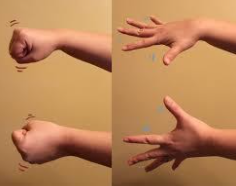Healthy movement and sports are good for physical as well as mental health.
Aerobic sports such as jogging, swimming, cycling, walking, and dancing reduce anxiety and depression. This is thought to be due to changes in the blood supply and hormonal balance of the brain, which are brought on by physical activity. This has been found to be the mechanism by which doing sports influences emotions and motivation, feelings of fear, and certain functions of the memory at the brain level.
Physical activity and sports also provide an opportunity to interact with other people and to find ways to have new experiences.
Hey! I am first heading line feel free to change me
- Better sleep
- Reduced stress level
- Improved mood
- Reduced anxiety level
- More energy
- Less fatigue
- Excellent effect on memory, learning ability, concentration
- Improved self-esteem
- Improved physical health
How much?
It is recommended to do sports and move joyfully and in moderation. You should certainly not overdo it – consider your general health status!
RECOMMENDATIONS FOR CHILDREN AND YOUNG PEOPLE
Get at least 60 minutes of moderate- or high-intensity exercise each day
Moderate-intensity exercise includes cycling and participating in movement games.
High-intensity exercise includes running at a fast pace, swimming, football, and other sports.
Do exercises which strengthen the muscles and bones at least three times a week.
Reduce long periods of being sedentary. Some suggested ways to do it:
- Reduce screen time;
- If possible, walk short distances rather than take the bus or drive a car;
- Walk part of the way when taking the bus or driving a car.
RECOMMENDATIONS FOR ADULTS:
Get at least 150 minutes of moderate-intensity* or 75 minutes of high-intensity** exercise, or a combination thereof, each week.
- Moderate-intensity exercise includes biking, Nordic walking.
- High-intensity exercise includes running, swimming, playing sports.
Moderate-intensity exercise should be done for least 10 minutes at a time.
Do exercises which strengthen the muscles and bones at least two times a week (e.g. strength training, carrying or moving weights).
Reduce long periods of being sedentary. Some suggested ways to do it:
- Taking regular movement breaks at work
- Reducing screen time
- If possible, walk short distances rather than take the bus or drive a car
- Walk part of the way when taking the bus or driving a car
.
*An activity is considered moderate-intensity when it causes the body to feel warmer and increases the heart and respiration rates, but still makes it possible to have a conversation.
** An activity is considered moderate-intensity when it causes the body to feel markedly warmer, significantly increases the heart and respiration rates, and makes it difficult to have a conversation.


